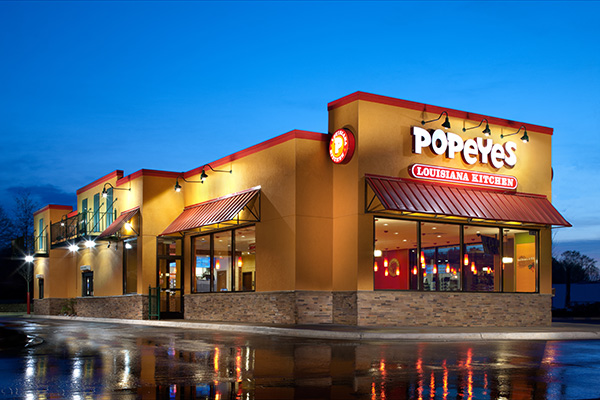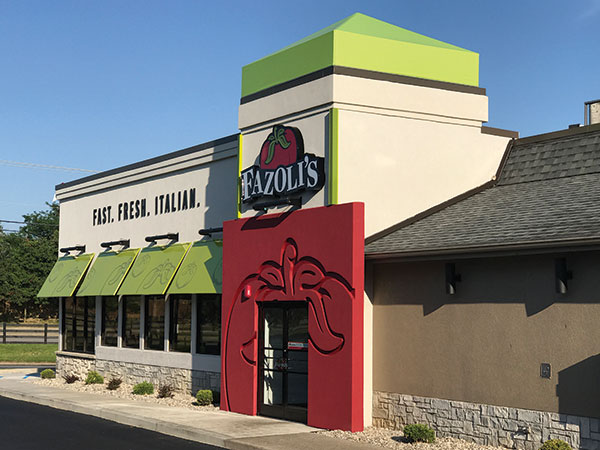As a company whose sole focus is building mathematical real estate models, we are often asked, “Do real estate models really work?” Or, as one client put it, “I know that half the deals my broker brings me are probably wrong. I just don’t know which half!”
Our answer to questions on the effectiveness of real estate models is a qualified yes. Real estate models work if they are built and consistently employed as part of an integrated development review process. In fact, it is not unusual to see chains accurately screen their brokers’ work by consistently employing their models and realize new unit sales increases of 20 percent to 30 percent or more.

First Things First: Models Don’t Cure Cancer
Before proceeding further, it should be noted that real estate models don’t cure cancer. And they are absolutely incapable of saving a chain with major brand proposition and/or value issues. Before investing in a real estate model to help expand its system, any restaurant chain needs to ensure that it has first established a clear market position with food and value that effectively position it as a leader in its segment.
Further, the chain needs to have developed a new, forward-looking prototype that can be adjusted for multiple different development opportunities. With those pieces in place, investment in a real estate model not only makes sense, it can make a big difference in terms of driving sales going forward.
What Real Estate Models Do
Properly built, real estate models deliver five key benefits. They:
- Identify Brand-Critical Consumer Profiles. Up-front consumer research identifies a restaurant brand’s critical consumer profile. This profile typically accounts for 20 percent to 30 percent of the U.S. household base while delivering 60 percent to 80 percent of brand customer visits. Secondly, the up-front consumer research identifies the required trade-area densities that align with that consumer profile and deliver critical mass densities of the surrounding residential base, daytime employment and the retail base in the trade area. Successful chains focus relentlessly on their brand-critical consumer profile and required trade area densities.
- Rank Markets. Armed with up-front consumer research, real estate models then quantitatively rank all 210 U.S. DMAs (designated market areas) for their fit with the identified consumer and required trade-area densities. Successful chains develop their highest potential markets first; not just the ones franchisees and developers bring to them.
-
Identify All High-Potential Trade Areas. Real estate models then map leading DMAs to quantitatively identify all high-potential trade areas. These trade areas match the identified consumer and required trade area densities and can support a new unit at above system-average sales. We typically find that more than half the deals brokers bring to our clients simply don’t align with their modeled, pre-identified high-potential trade areas. Successful chains set these lower quality trade areas aside and only move deals forward that align with their pre-modeled and pre-targeted trade areas.
-
Forecast New-Site Sales and Cannibalization. New-site real estate models quantify on-the-ground variables, such as site positioning, visibility, ingress/egress and parking, among others. This type of data is collected via a field questionnaire that captures some 80 factors, each of which can raise or lower actual sales at a restaurant site. The model then produces reports that forecast expected sales and impact, if any, on nearby existing units. Successful chains consistently screen new sites for model scores above system average and forecasted sales 10 percent above their unit-level requirements (to allow for model variance).
-
Power-Up an Integrated Development Review Process. Real estate models need to sit within an integrated development review process that also incorporates a detailed site review package, with input from each of the management team departments — NOT just real estate or finance.
Macro to Micro
In short, real estate models provide the dispassionate, independent math needed to help chains move through their development process from the question of, “Which markets first?” (macro view) to, “Which new site first?” (micro view). This process completely flips the familiar broker-led development process.Traditionally, brokers start with the available deals in a market and then assemble data to convince their chains to approve those deals. Armed with their models, however, chains can seize the strategic initiative by directing their brokers to look for deals only in pre-modeled, pre-identified markets and trade areas.As Greg Vojnovic, chief development officer at Popeyes Louisiana Kitchen, puts it, “Our real estate model helps us screen for the best consumers, in the best markets, in the best trade areas, in the best sites, with projected new-unit pro formas that yield the best returns.”Greg ought to know. Under his leadership, Popeyes increased its new restaurant annual sales from a baseline of about $1 million per unit in 2007 — prior to implementing a model-enabled, disciplined site-review process — to $1.6 million per unit in 2012.Backed by these results, Popeyes has reignited franchise growth, delivering more than 360 new units over the past five years.
Working With Real Estate Models
As important a tool as real estate models can be, their use is only fully leveraged when a chain sets clear decision rules and then consistently follows them. For Popeyes, rules that determine a successful new site include:
- Is located in a prioritized DMA that has been targeted for development.
- Is aligned with a pre-modeled and pre-identified target trade area.
- Has a modeled trade-area quality score (the net of a site’s surrounding residential, retail and daytime base) above the current system average.
- Has a modeled site quality score (the net of a site’s many on-the-ground site variables) above the current system average.
- Has a modeled sales estimate that is above the current system average.
- Is supported by the conclusions of the real estate team’s site visit and qualitative review.
In short, the real estate review process at Popeyes incorporates both the art and the science of the deal. Or, as Greg puts it, “We don’t just chase the math in the model. Great real estate is the right combination of art and science. The new restaurant has to pass muster with our heads and our hearts. While we sometimes make exceptions, in general, sites only move forward that we support with both our judgment and our real estate model. If something does not seem right with the model based on our instincts, we will go back and look at the algorithm to see if it is missing something in the market environment.”Given Popeyes’ industry-leading results, that is some pretty powerful art and science!



